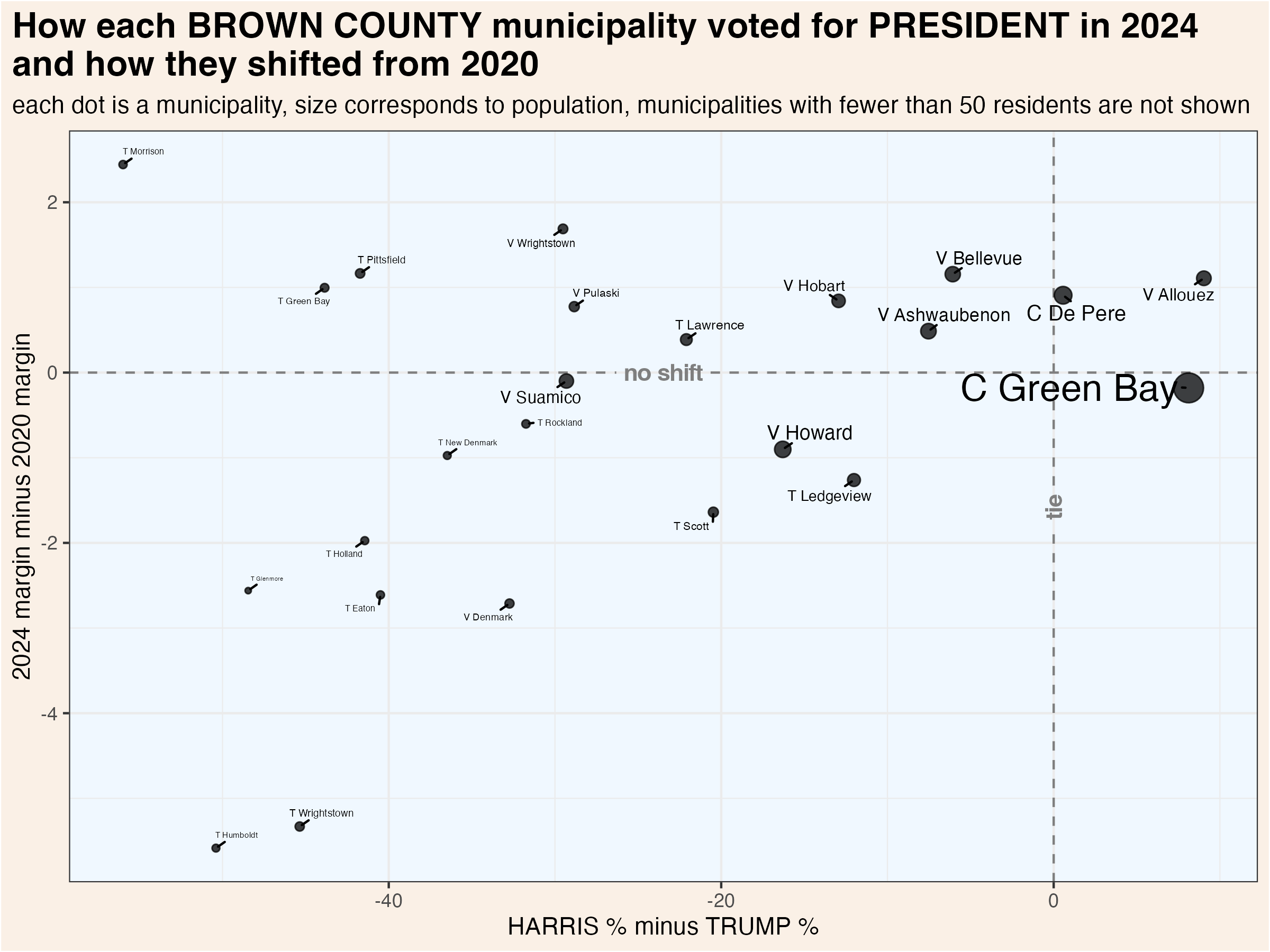
7 Brown
Brown County (pop. 269,000) is Wisconsin’s 4th largest county and the largest in the northern half of the state. Across many demographic measures–age, race, education, income–it closely mirrors state averages. Politically, it also reflects the political divisions of the state, although it leans slightly more Republican that the state overall. Looking back to 2000, Republicans have won all but 1 presidential race, every gubernatorial contest, and half the US Senate contests in Brown County.
7.1 Demographics

7.2 County Election Results

Click each column name to sort its values.
7.3 Municipality Election Results
About 40% of Brown county’s population lives in the City of Green Bay, which is also the most Democratic community. Even Green Bay is not overwhelmingly Democratic, in contrast to some of Wisconsin’s other cities. Scott Walker won the city in his 2014 reelection campaign. In 2024, Biden won only Green Bay, the Village of Allouez, and the City of De Pere. Trump won every other community.
This map shows the location of each municipality in the county, as it existed in 2022.

These dot plots show the most recent election results in each municipality.



To more clearly illustrate recent changes in municipality voting trends, these scatterplots compare the most recent vote for president and senator with the shift from that office’s previous election.


These maps show show every election result since 2000 in each municipality.



Click each column name to sort its values.
7.4 Supreme Court Election Results
Wisconsin’s Supreme Court has 7 justices, each of whom are elected to 10 year terms in statewide elections held in April. State law prohibits more than one Supreme Court election from being held in a single year. If a seat becomes vacant, the governor appoints a replacement who serves until the next year in which no court election is already scheduled. If more than two candidates achieve ballot access, a nonpartisan, top-two primary is held in February.
Court elections are formally nonpartisan, but candidates are usually supported by either liberals or conservatives. In recent years, it has become common for the Democratic and Republican parties to endorse and actively campaign on behalf of favored judicial candidates. The liberal and conservative labels indicated in the following graphs and tables are based on widely recognized tendencies, not any formal affiliation.
7.4.1 County Election Results
This graphic compares how presidential, gubernatorial, and court elections have trended over the past quarter century. Click the “Table” tab to see detailed results for the Supreme Court races.

7.4.2 Municipality Election Results
The following table shows the results of each Supreme Court election by municipality. The graphic visualizes the shifts over the past three court elections.
